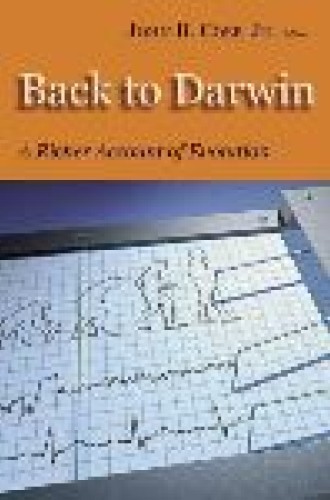Back to Darwin: A Richer Account of Evolution
In June 1858 Charles Darwin received a letter accompanied by a 15-page manuscript from Alfred Russell Wallace, a fellow naturalist, with the request that Darwin review the manuscript for possible publication. The story is well known that after Darwin consulted with his friends the geologist Charles Lyell and the botanist Joseph Hooker, Wallace’s paper was read at a scientific meeting in London, along with some scattered materials from Darwin’s letters and manuscripts. This episode spurred Darwin to condense a planned “big species book” into a manageable manuscript, which was published in November 1859. The 1,250 original copies of On the Origin of Species by Means of Natural Selection, or the Preservation of Favoured Races in the Struggle for Life quickly sold out, and additional printings and editions (eventually some six in all) soon began to roll off the presses.
Back to Darwin: A Richer Account of Evolution, ably edited with pertinent commentary by John B. Cobb Jr., is an outgrowth of another conference, this one on science and religion and held in Claremont, California, in 2004. The book is divided into four main sections that discuss various background materials for understanding evolution, a broadening of evolutionary theory, some philosophical challenges to neo-Darwinism, and the relation of evolution and God.
The book’s 15 authors are a heady mix of conversation partners whose approach to evolution ranges from research and analysis to intellectual history and philosophy of science, from physics and mathematics to philosophical theology. The overall aim of the book is to examine “the relation of evolutionary theory to religious faith, especially to theism,” on the basis of on an integration of the process philosophical views of Alfred North Whitehead with an expanded and reconditioned neo-Darwinism. Back to Darwin claims that this integration can offer a more satisfactory worldview than the metaphysics of Cartesian dualism, with its implicit mechanistic reductionism and atheistic naturalism.
Anyone attempting such integration has a daunting task. Whitehead’s thought is complex, and visions of God are by no means uniform. Cobb views God not as a controlling supernaturalist or a special creationist, but as One who is very much a part of the evolutionary process, who acts in the processes of change. He suggests that if we can “affirm a role for God in a world explained by science,” we must then ask “how God acts in the world.”
How well Back to Darwin pulls off the integration Cobb aims for depends on where one stands on the modern interpretations and emphases of organic evolution, the need to integrate metaphysics, and the question of whether process theology can be an adequate replacement for a thoroughgoing mechanistic naturalism. It also depends on one’s vision of God and whether that vision is adequate for the task of a satisfactory integration. Despite Cobb’s steady hand, there are some significant disagreements among the contributors to this volume—about the meaning and application of the term neo-Darwinism, for example, and over the types of causative factors that affect evolutionary changes and the degree to which Whiteheadian thought provides the best metaphysics for integrating science and religion.
The book could have been strengthened by a more uniform definition of neo-Darwinism. In Cobb’s opinion, neo-Darwinism is a “synthesis of Darwinian evolution and Mendelian genetics,” but one of the contributors suggests that it is “Darwinism in the light of modern genetics,” which certainly is not strictly equivalent to Mendelian genetics.
Recent writings on evolution by Ernst Mayr, Richard Dawkins and others suggest that the term neo-Darwinism be dropped and that Darwinism be viewed, in Mayr’s words, as a “highly complex research program that is being continuously modified and improved.” The authors do not discuss the evolution of plants and fungi, the significance of Mayr’s population thinking, or various views about the biogeographical origin of species (as a plant systematist, I don’t think the divisions between species and genera are as clear-cut as one of Cobb’s contributors, echoing the Platonism of Whitehead, seems to suggest). A look at recent advances in evolutionary developmental biology would also have added more meat to the discussion.
Nevertheless, this book is an important contribution to a possible integration of Whiteheadian process thought about God with modern evolutionary theories. Though difficult to read in spots, it offers a solid introduction to both modern evolutionary thought and process theology. I share Cobb’s hope that scientists will reconsider the implicit metaphysical foundations of their work and will think about whether their interpretations of organic evolution could benefit from a Whiteheadian approach. The task is formidable, but Back to Darwin has begun a worthwhile and important project that should be continued and expanded.



